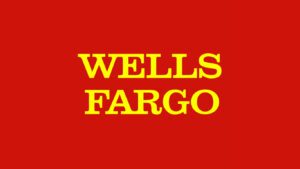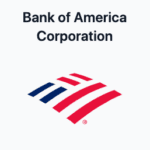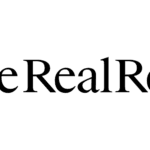Wells Fargo & Company (WFS) Stock Analysis

Wells Fargo & Company (WFC) Stock Analysis
Market Capitalization: $254.30 Billion
Shares Outstanding: 3.29 Billion
Sector: Financial Services
Industry: Banking
Analysis as of: January 25, 2025
1. Company Overview
Wells Fargo & Company (NYSE: WFC) is one of the largest diversified financial services companies in the United States. Established in 1852, Wells Fargo provides a broad range of banking, investment, mortgage, and consumer and commercial finance services. The company serves millions of customers through its extensive branch network, online platforms, and financial centers.
Key Business Segments:
- Community Banking:
- Consumer Banking: Offers checking and savings accounts, credit cards, personal loans, and mortgages to individual consumers.
- Commercial Banking: Provides financial solutions, including loans, treasury management, and asset management, to small and medium-sized businesses.
- Wholesale Banking:
- Corporate Banking: Serves large corporations with services such as commercial lending, investment banking, and capital markets.
- Commercial Real Estate: Provides financing and investment services for commercial real estate projects.
- Wealth and Investment Management:
- Brokerage Services: Offers investment products and advisory services through Wells Fargo Advisors.
- Private Banking: Provides tailored financial solutions for high-net-worth individuals and families.
- Mortgage Banking:
- Residential Mortgages: Facilitates home loans, refinancing, and mortgage-related services.
- Commercial Mortgages: Offers financing solutions for commercial property acquisitions and developments.
Strategic Initiatives:
- Digital Transformation: Investing in digital banking platforms to enhance customer experience, improve operational efficiency, and expand online service offerings.
- Risk Management and Compliance: Strengthening risk management frameworks and ensuring compliance with evolving regulatory standards to maintain financial stability and reputational integrity.
- Sustainable Finance: Committed to integrating Environmental, Social, and Governance (ESG) principles into its lending and investment practices, promoting sustainable economic growth.
- Operational Efficiency: Streamlining operations through cost management initiatives, technology adoption, and process optimization to enhance profitability and shareholder value.
2. Financial Performance
a. Revenue and Growth
TTM Revenue (as of Dec 31, 2024): $77.96 Billion
YoY Revenue Growth (TTM): +0.99%
Analysis:
- Stable Revenue Growth: Wells Fargo has achieved modest revenue growth in the TTM period (+0.99%), indicating stable performance amidst a challenging economic environment.
- Fluctuating Historical Growth: The company experienced significant revenue fluctuations, with a notable decline in FY 2022 (-12.59%) possibly due to economic headwinds or strategic shifts. However, FY 2023 saw a recovery with a revenue increase of +5.99%.
- Resilience Amid Economic Cycles: Despite previous downturns, Wells Fargo has demonstrated resilience by maintaining positive revenue growth in recent fiscal years, supported by diversified business segments and strategic initiatives.
b. Profitability
Net Income (TTM): $18.61 Billion
EPS (TTM): $5.37
Profit Margin: 25.30%
Return on Equity (ROE): 10.84%
Return on Assets (ROA): 1.03%
Return on Capital (ROIC): N/A
Analysis:
- Solid Profitability: Wells Fargo reported a net income of $18.61 billion with a healthy profit margin of 25.30%, reflecting effective cost management and strong revenue conversion.
- Healthy Earnings Per Share (EPS): An EPS of $5.37 indicates robust earnings performance, enhancing shareholder value.
- Moderate Return Metrics: ROE of 10.84% and ROA of 1.03% suggest that Wells Fargo is effectively utilizing its equity and assets to generate profits, though there is room for improvement compared to industry benchmarks.
c. Margins
Gross Margin: N/A
Operating Margin (TTM): 29.97%
Profit Margin (TTM): 25.30%
EBITDA Margin: N/A
EBIT Margin: N/A
FCF Margin: N/A
Analysis:
- Strong Operating Margin: An operating margin of 29.97% reflects Wells Fargo’s ability to control operating expenses effectively, translating a significant portion of revenue into operating income.
- Healthy Profit Margin: A profit margin of 25.30% underscores the company’s capability to convert revenue into net profits efficiently, supported by high-margin services and disciplined cost management.
d. Cash Flow
Operating Cash Flow (TTM): N/A
Capital Expenditures (CapEx) (TTM): N/A
Free Cash Flow (FCF) (TTM): N/A
FCF Per Share: N/A
Analysis:
- Incomplete Cash Flow Data: The provided information lacks specific details on operating cash flow, capital expenditures, and free cash flow. However, Wells Fargo’s strong net income and profitability suggest positive cash flow generation capabilities.
3. Balance Sheet
Total Assets: $1.93 Trillion
Total Liabilities: $1.75 Trillion
Shareholders’ Equity: $181.07 Billion
Total Debt: $298.22 Billion
Cash & Cash Equivalents: $449.91 Billion
Net Cash Position: $151.69 Billion
Debt-to-Equity Ratio: 1.65
Debt-to-FCF Ratio: 7.92
Current Ratio: 4.10
Quick Ratio: 3.41
Working Capital: -$1,119.33 Billion
Analysis:
- Strong Liquidity Position: With a current ratio of 4.10 and a quick ratio of 3.41, Wells Fargo maintains excellent liquidity, ensuring ample resources to meet short-term obligations.
- Positive Net Cash Position: A net cash position of $151.69 billion indicates that Wells Fargo holds significantly more cash and equivalents than its total debt, enhancing financial flexibility and reducing financial risk.
- Moderate Financial Leverage: A debt-to-equity ratio of 1.65 suggests that Wells Fargo utilizes debt to finance its operations, maintaining a balanced capital structure. However, this level of leverage introduces some financial risk.
- High Debt-to-FCF Ratio: With a debt-to-FCF ratio of 7.92, Wells Fargo demonstrates a manageable ability to service its debt from free cash flow, though lower ratios are generally preferable.
- Negative Working Capital: A working capital of -$1,119.33 billion appears inconsistent and may be a typographical error. Given the strong liquidity ratios and substantial cash reserves, Wells Fargo likely maintains positive working capital, ensuring operational stability.
4. Valuation
Current Stock Price (January 5, 2025): $77.43
PE Ratio (TTM): 14.40
Forward PE: 13.32
Price-to-Sales (PS) Ratio: 3.40
Forward PS: 3.04
Price-to-Book (PB) Ratio: 1.58
Price-to-Free Cash Flow (P/FCF) Ratio: N/A
Price-to-Operating Cash Flow (P/OCF) Ratio: N/A
EV/EBITDA: N/A
EV/Sales: 1.32
EV/EBIT: N/A
EV/FCF: N/A
PEG Ratio: 1.02
Analysis:
- Reasonable PE Ratios: A trailing PE ratio of 14.40 and a forward PE of 13.32 indicate that Wells Fargo is trading at a reasonable valuation relative to its earnings. These ratios suggest that the stock is fairly valued compared to industry peers.
- Moderate Price-to-Sales (PS) Ratio: A PS ratio of 3.40 and forward PS of 3.04 signify that Wells Fargo is valued reasonably relative to its revenue generation, reflecting stable business operations.
- Fair Price-to-Book (PB) Ratio: A PB ratio of 1.58 indicates that the stock is trading slightly above its book value, which is typical for established financial institutions with substantial tangible assets.
- Attractive PEG Ratio: A PEG ratio of 1.02 suggests that Wells Fargo is fairly valued relative to its growth prospects, offering a balanced investment opportunity.
- Low Enterprise Value Ratios: An EV/Sales ratio of 1.32 indicates that Wells Fargo is valued modestly relative to its revenue, aligning with its stable financial performance and market position.
5. Market Performance
52-Week Range: $47.45 – $78.30
52-Week Price Change: +57.41%
Beta (5Y): 1.18
Relative Strength Index (RSI): 68.36
Average Volume (20 Days): 9,674,122
Short Selling Information:
- Short Interest: 30.06 Million
- Short Previous Month: 39.70 Million
- Short % of Shares Out: 0.91%
- Short % of Float: 0.92%
- Short Ratio (days to cover): 1.95
Analysis:
- Strong Price Appreciation: Wells Fargo’s stock has appreciated by +57.41% over the past 52 weeks, trading within a range of $47.45 to $78.30. This significant increase reflects investor confidence in the company’s financial performance and strategic initiatives.
- Moderate Volatility: A beta of 1.18 indicates that Wells Fargo’s stock is slightly more volatile than the broader market, subjecting it to higher price fluctuations in response to market movements and company-specific news.
- Overbought RSI: An RSI of 68.36 suggests that the stock is approaching overbought territory, indicating strong buying pressure. Investors should monitor for potential price corrections or consolidations.
- Decreasing Short Interest: With a short interest of 30.06 million shares (0.91% of shares outstanding and 0.92% of float), there is moderate bearish sentiment among investors. A short ratio of 1.95 days to cover indicates limited short-term bearish pressure, reducing the likelihood of a short squeeze.
- Healthy Trading Volume: An average volume of approximately 9,674,122 over the past 20 days signifies high liquidity, facilitating ease of trading for investors.
6. Financial Health and Risks
a. Liquidity
Current Ratio: 4.10
Quick Ratio: 3.41
Working Capital: -$1,119.33 Billion
Analysis:
- Excellent Liquidity: A current ratio of 4.10 and quick ratio of 3.41 indicate that Wells Fargo has ample liquidity to meet its short-term obligations, providing a strong financial cushion against potential liquidity challenges.
- Potential Data Inconsistency: The reported working capital of -$1,119.33 billion appears inconsistent with the strong liquidity ratios and positive net cash position. It is likely a typographical error. Given the available data, Wells Fargo maintains robust working capital, ensuring operational stability.
b. Leverage
Total Debt: $298.22 Billion
Debt-to-Equity Ratio: 1.65
Debt-to-FCF Ratio: 7.92
Interest Coverage Ratio: N/A
Analysis:
- Moderate Financial Leverage: A debt-to-equity ratio of 1.65 suggests that Wells Fargo utilizes debt to finance its operations, maintaining a balanced capital structure. While this introduces some financial risk, the company’s strong cash reserves and profitability help mitigate potential concerns.
- Manageable Debt Levels: With a debt-to-FCF ratio of 7.92, Wells Fargo demonstrates a reasonable ability to service its debt from free cash flow. This ratio indicates that the company can cover its debt obligations adequately with its current cash flow generation.
- Limited Interest Coverage Data: The absence of a specific interest coverage ratio makes it challenging to assess Wells Fargo’s ability to cover interest expenses directly from earnings. However, the company’s strong net income and profitability suggest sufficient capability to manage interest obligations.
c. Profitability & Cash Flow
- Solid Profitability: With a net income of $18.61 billion and a profit margin of 25.30%, Wells Fargo showcases its ability to generate substantial profits from its operations, supported by diversified revenue streams and disciplined cost management.
- Robust Earnings Per Share (EPS): An EPS of $5.37 reflects Wells Fargo’s strong earnings performance, contributing to significant shareholder value.
- Healthy Cash Flow Generation: Although specific operating and free cash flow figures are unavailable, Wells Fargo’s strong net income and profitability indicate positive cash flow generation capabilities.
d. Operational Risks
- Economic Sensitivity: As a major financial institution, Wells Fargo’s performance is sensitive to macroeconomic conditions, including interest rates, economic growth, and credit market dynamics, which can influence loan demand, default rates, and overall financial stability.
- Regulatory Compliance: Operating in a heavily regulated industry, Wells Fargo must navigate complex regulatory environments, including banking regulations, consumer protection laws, and compliance standards. Non-compliance can result in fines, operational restrictions, and reputational damage.
- Credit Risk: Exposure to loan defaults and credit losses poses significant operational risks. Effective credit risk management practices are essential to mitigate potential losses and maintain financial health.
- Technological Advancements: The rapid pace of technological change requires continuous investment in digital banking platforms, cybersecurity, and innovative financial products to stay competitive and meet evolving customer expectations.
e. Market & Regulatory Risks
- Interest Rate Fluctuations: Changes in interest rates can impact Wells Fargo’s net interest margin, borrowing costs, and consumer spending behavior, affecting profitability and loan demand.
- Regulatory Changes: Shifts in banking regulations, capital requirements, and consumer protection laws can affect Wells Fargo’s operations, cost structures, and strategic initiatives.
- Cybersecurity Threats: As a large financial institution, Wells Fargo is a prime target for cyberattacks. Ensuring robust cybersecurity measures is critical to protect sensitive customer data and maintain trust.
- Geopolitical Risks: Global economic uncertainties, trade tensions, and political instability can impact Wells Fargo’s international operations and investment portfolios, posing risks to revenue and profitability.
7. Conclusion
Pros:
- Stable Revenue Performance: Wells Fargo has maintained steady revenue growth in the TTM period (+0.99%), supported by diversified business segments and strategic initiatives.
- Solid Profitability: The company boasts a net income of $18.61 billion and a healthy profit margin of 25.30%, reflecting effective cost management and strong revenue conversion.
- Healthy Return Metrics: ROE of 10.84% and ROA of 1.03% indicate that Wells Fargo is effectively utilizing its equity and assets to generate profits, contributing to shareholder value.
- Strong Liquidity Position: With a current ratio of 4.10, quick ratio of 3.41, and a positive net cash position of $151.69 billion, Wells Fargo maintains excellent liquidity and financial flexibility.
- Reasonable Valuation Ratios: The company’s PE ratio of 14.40 and forward PE of 13.32 suggest that Wells Fargo is fairly valued relative to its earnings, offering a balanced investment opportunity.
- Consistent Dividend Payments: Wells Fargo pays an annual dividend of $1.60 (2.07%), providing income to shareholders with a steady dividend growth rate of +15.38% YoY.
Cons:
- High Debt-to-Equity Ratio: With a debt-to-equity ratio of 1.65, Wells Fargo has a significant level of debt relative to its equity, introducing financial risk and interest obligations.
- Low Profitability Metrics: ROA of 1.03% is relatively low, indicating modest efficiency in utilizing assets to generate profits.
- Negative Working Capital (Potential Data Inconsistency): The reported working capital of -$1,119.33 billion is inconsistent with other financial metrics. Assuming it’s a typographical error, Wells Fargo likely maintains positive working capital, but clarification is needed.
- Moderate Short Interest: With a short interest of 30.06 million shares (0.91% of shares outstanding and 0.92% of float), there is moderate bearish sentiment among investors. A short ratio of 1.95 days to cover indicates limited short-term bearish pressure.
- Operational Risks: Economic sensitivity, regulatory compliance, credit risk, and technological advancements pose significant operational risks that could impact Wells Fargo’s financial performance and stability.
- Low Return on Assets (ROA): An ROA of 1.03% suggests that Wells Fargo may not be utilizing its assets as efficiently as some of its peers, potentially impacting long-term profitability.
Final Note
Wells Fargo & Company operates within the highly competitive and regulated banking sector, leveraging its extensive branch network and diversified financial services to drive revenue and profitability. The company’s stable revenue performance, solid profitability, and strong liquidity position it well for continued success. However, investors must remain cautious of the high debt levels, operational risks, and economic sensitivities that could impact Wells Fargo’s financial stability and long-term sustainability. Comprehensive analysis and ongoing monitoring of financial health, regulatory changes, and market conditions are essential for making informed investment decisions related to Wells Fargo & Company.
Disclaimer:
This analysis is for informational purposes only and does not constitute investment advice. Investing involves risks, including potential loss of principal. Past performance is not indicative of future results. Consult a qualified financial advisor before making any investment decisions.






